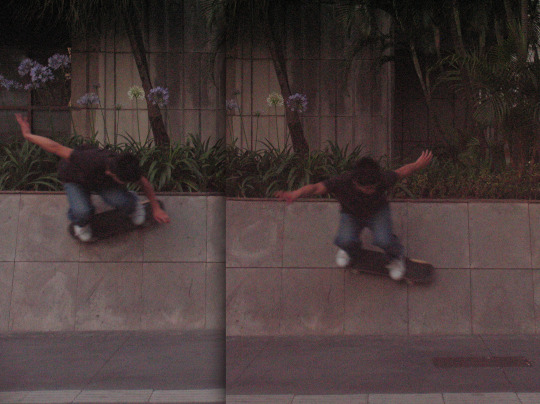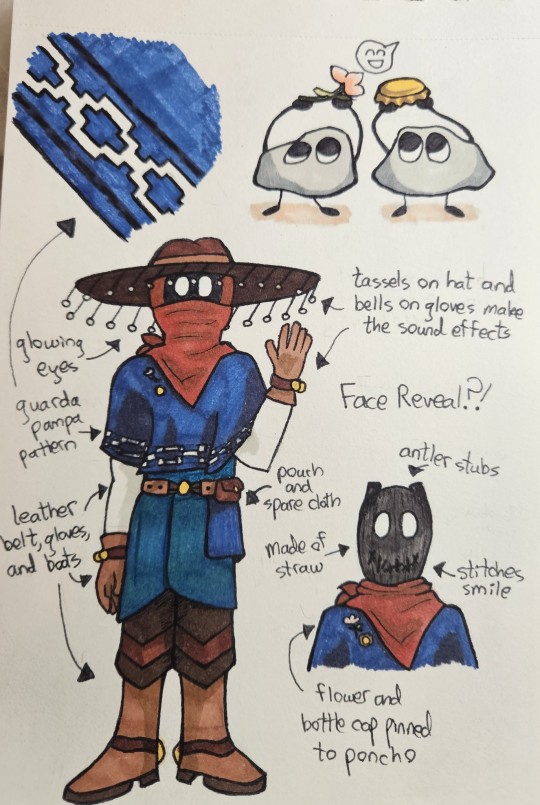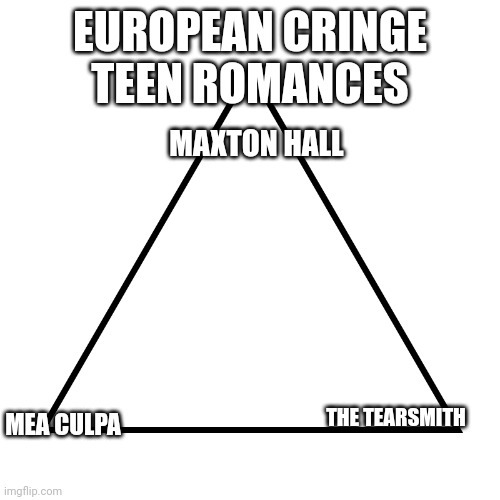#latin american culture
Explore tagged Tumblr posts
Text
YR fanfic pet peeves (and corrections): latin america edition
so. i was originally going to post this in january as a kind of "new year, new opportunity to learn about simon's hispanic heritage" kind of a thing, but life got busy, and then my computer died and i lost my original list, so i've had to reconstruct this from memory as best as i could. there may be some stuff missing, so perhaps i'll just keep adding to this post as missing/new points come to mind.
disclaimer 1: if you've included any of the points made here on any fanfic of yours, please don't take this as a call-out. this isn't intended to shame anyone, but rather as an educational opportunity. it's very rare that a latin american nationality that is not mexican or colombian or puerto rican is showcased in an international show, especially outside of the US, and it's given me such joy to have all of you lovely folks make the effort to be open to and research and understand the idiosyncrasies of simon's (and omar's) heritage because the rest of latin america tends to go overlooked in most other fandoms. so i don't intend to scold anyone with this. we can't all know everything about every other culture-- lord knows i don't know everything about sweden, but i want to be respectful to the country and its people and that is why i heavily research anything i don't know and ask people who do know when my research doesn't quite cover it and am open to corrections when even that falls short. i expect most of you come to write about simon's family background in good faith and also want to be respectful to his family's culture, and so i thought i might make things a bit easier for you all by putting the most common errors/misunderstandings i've seen in one handy post. but once again, it's not a call-out, i don't get offended by these things, and i'm in no way implying, if you've done any of these things in fic or in life, that you are a bad person. i understand people make mistakes when they don't know things.
disclaimer 2: i am not venezuelan myself. i was born and raised in the same general region of latin america, though, and i have venezuelan friends and have worked with venezuelan people and have visited venezuela. generally speaking, i feel their culture is very similar to mine (though our spanish is much closer to spanglish than theirs is, haha xD) and feel a deep kinship with them. but of course, i'm no native, and if you're venezuelan and catch anything here that you feel is incorrect, feel free to point it out and i'll add a correction in your name.
warning: this is very long. christ almighty. DX if you can't make it to the end, tl;dr-- feel free to ask if you have any questions or if anything isn't clear. my ask box/messages are always open.
1- "mijo." this is the only one that legit has caused me to click out of several fics/chapters, at least in the beginning, but i've learned to grin and bear it by now. it's not so much that it's wrong, per se, but rather it's more of a location issue. "mijo" is, to my ears, very much a mexican (or, if you stretch it, northern triangle) slang. it IS used sparingly in other countries, but rarely used unironically. instead, if you hear the term used in the caribbean region of latin america (which my country is part of, as is a large part of venezuela), it's almost always used… let's say sarcastically. for example, if your grown-ass adult friend is being a dumbass and doing something reckless, you might call out "oiga, mijo, se va a romper el cuello" ("hey, mijo, you're going to break your neck"). basically, it's a way of calling someone immature like a child. it doesn't have to be ENTIRELY unaffectionate (kinda like the way someone might call their significant other "idiot" or "dummy" but mean it endearingly. in fact, in colombia it's way more common for spouses to call each other "mijo/a" than it is for them to call their children that), but you can also use it with complete strangers-- like if someone cuts sharply into your lane while you're driving, you might yell at them "oiga, mijo, a donde le enseñaron a manejar, en un potrero?!" ("hey, mijo, where did you learn how to drive, in a horse paddock?!"). but even in these sarcastic/neggy cases, it's rare. and EVEN RARER to hear a mother call her children "mijo" or "mija" in this region. it's just not a thing. so when i read it in fanfic, it immediately takes me out of the story because it's so weird to me that linda would sound mexican-- it's a very distinctive accent, which carmen gloria 1000000% does not have. (plus, "mijo" in spanish is a type of birdseed. so it gave me a chuckle the first few times i read it in a fic because i always have that brief second of confusion where i go "why is linda calling simon birdseed?" before it clicks. xD i'm a dork.) it's much more likely that linda would just say "hijo" or "mi hijo," instead.
1b- the way you decide on whether to use "hijo" or "mi hijo" is important because "mi hijo" can sound overly formal in the modern context especially, much like it would in english. in fact, you can use the english version of it, "son" vs "my son" to guide you on which of the two to use. like for example, if linda were to say directly to simon "i love you, my son," she would sound oddly old-timey and anachronistic, so you would just use "son" ("hijo") in that case. whereas if she's talking about simon with someone else, for example saying "i told my son to be here on time," you'd be perfectly okay to use "mi hijo" in that sentence in spanish. it's very transferable in that case.
2- speaking of non-transferable, though, you can't use "cariño" in all instances you would use "sweetheart" or "sweetie." it really depends on the grammatical construction, and it can be tricky to get it right, but it depends on whether you're using it as a direct address or as an object. for example, if you're using it in place of someone's name-- say, a mother telling her child "te quiero, cariño" ("i love you, sweetheart/sweetie") is perfectly fine, because in that case, she could also say "te quiero, hijo" ("i love you, son") or "te quiero, simon" ("i love you, simon"). but if, say, simon says to wille "you're my sweetheart," you would not use "cariño" there; you'd go instead with some syrupy way to say "boyfriend," like "eres mi novio" or "eres mi enamorado" or even "eres mi amor," and if sara tells felice "you're a sweetheart," that would also not involve "cariño" at all. in addition, "cariño" is also very rarely used in plural; if linda is using a term of endearment for both her kids, or for a group of teens her kids' age, she would use a different term of endearment altogether: "hola, mis amores" ("hi, my loves"), "hola, bebés" ("hi, babies") or "hola, mis tesoros" ("hi, my treasures") among some examples. one exception is when you say "cariños míos" ("my sweethearts"), but very rarely the plural by itself. in fact, "cariño" is often slang for gift or present, especially in the diminutive-- for example, if you go to someone's celebratory party for some occassion (birthdays, graduations, baby showers, heck even christmas), you might hand them a small gift and go "te traje un cariñito" ("i brought you a small present"), and if it's more than one gift, or you're bringing gifts for several people, then you'd say "unos cariños" or "unos cariñitos" in the plural.
3- simon's skin is tan, not tanned. this… doesn't personally bug me as much because it's more of an english grammar issue, but i know people who might actually feel very offended if you get this one wrong with respect to them. "tan" is a color; a light shade of brown. "tanned" implies the original color of your skin has darkened with the sun. now, i'm sure simon can tan (lucky goat, says she whose skin burns even while indoors), but about 95% of the time "tanned" is used in YR fanfiction, it's used as a descriptor of the color of simon's skin as we see it on the show. that would imply his skin used to be lighter at some indeterminate before-time and has been darkened by the sun. this is incorrect; that is the natural color of simon's skin. so stick to "tan skin" instead (not tan PERSON, mind you. his SKIN is tan, he is not). and i would gently suggest that if you take away any single thing from this post, make it ESPECIALLY this point, as someone more sensitive than me might interpret this error as some kind of retroactive whitewashing. and i don't want anyone here to get in trouble for simply not knowing.
4- pabellón criollo is one dish, yes, but it's four different FOODS. it's not something a newbie would be able to make off of a recipe (i don't know how to make it and i've been eating it all my life), and it's not something that's likely to be taught in just one day. also, if you're bringing it to a dinner or a potluck, you're bringing four separate food containers, not just one.
4b- also, venezuelan food, for the most part, is not particularly spicy. you CAN make it spicy if you want, but traditionally, it is not. it's flavorful, maybe even saucy depending on the dish, but rarely spicy. i know the joke of white people being unable to handle spice is funny, but there's also plenty of us hispanic people who are equally terrible at it, because there's different levels of spice in the food from different regions of latin america. besides, as a friend of mine perfectly put: we are living in the 21st century now. if you can eat mild mexican food, you should be able to handle traditional venezuelan food just fine. and i'm pretty sure there's mexican food in sweden. plus, wille would probably be more used to international food-- not only does he have the means, but having traditional meals in foreign countries is kind of part of the job.
5- while i'm at it: simon is definitely half venezuelan. this is canon as of S2. there is no other place in the world where that dish is called pabellón. please keep that in mind when you're writing and researching.
5b- this, along with several of the points above, is important because it's a bit of diaspora trauma that whenever we venture outside of latin america and people learn we're latino, they immediately assume we're mexican, or that our culture and traditions are the same as those of mexican people. it happens often, and it's incredibly annoying. not that there's anything wrong with mexico or mexican people-- they're lovely, and their traditions and culture and food are fantastic-- but we are not them, and treating us like we are is reductive. the rest of latin america can be very different and incredibly diverse, and it can be dispiriting when people treat us like we're all the same. so that is why it is important when writing about simon, his family or his venezuelan roots, that you take care to actually research things as they are in venezuela, and not just pick the low-hanging fruit of latino facts you might've learned through pop cultural osmosis, which eight times out of ten will be mexican-only because most hispanic people in the US are mexican and the US exports its media all over the world. i've learned to just roll my eyes at it by now, but some people might actually feel offended or hurt, and i'm sure nobody here intends for that to happen.
6- although simon speaks spanish, neither he nor sara nor his mother nor any aspect of his mother's culture is spanish. "spanish" is what people from spain call themselves. people from spanish-speaking latin american countries are not spanish; we are hispanic, or latino/a/e. "latinx" is… let's call it controversial, at least outside of the US. most people born and raised in latin america don't like it; i personally don't get offended if people use it, but i don't use the term myself. also, you can say "latin food" or "latin music," but we usually don't refer to PEOPLE as latin, but rather latino/a/e. if in doubt, just use latin american or hispanic. they're also conveniently gender neutral.
EDIT: @andthatisnotfake also brought up a very important point: "if you spell it latinx, it makes it harder for screen readers to read (or so I've been told) and some people depend on those, so there's another reason to avoid it." (the unpronounceability of that term is at least part of the reason why hispanic people who live in latin america don't like it.)
6b- never use "the latino/a" on its own to refer to people. "latino/a/e" is an adjective, not a noun, so you would say "the latino boy" or "the latino man" but never just "the latino." kinda like it would be weird to point out the one japanese man in a room as "the japanese." there are some nationality/ethnic terms that just don't work as nouns in english.
7- spanish is not simon's one native language-- or at least not any more than swedish is. he grew up in a mixed-race household, speaking two different languages. it's pointless to call spanish his native language when comparing it to swedish. both are his native languages. also, while we're at this, wille is probably at least bilingual (i'm assuming he can speak at least english), although he only has one native language. it's hardly a competition between the two boys as to who's more of a polyglot.
7b- simon wouldn't take classes on the spanish language-- like to learn how to SPEAK the language-- since spanish is one of his native languages. he wouldn't take them at hillerska, nor in university, nor elsewhere. he wouldn't be allowed. you're literally not allowed to take classes on your native language, nor get credit for said classes. trust me, those would've been an easy extra 24 credits for me in college if that was a thing.
EDIT: have been made aware (thanks, @rightsogetthis and @plantbasedfish!) that at least in sweden and in finland one IS allowed to take classes of your non-swedish/finnish native language, in certain circumstances. i have to say, i'd be pissed if i were taking my french classes alongside a french native speaker, but hey, the system's the system, i guess. ;) so i've struck this one out.
8- dear god please don't use google translate for your spanish translations. listen, i'm not judging-- i do it with other languages, too, when i'm in a pinch. but google translate is literally The Worst (tm) so i always try to either check with someone, or stick to the stuff i already know is correct. seriously, you don't want to know the kinds of crazy stuff GT can spit out that people actually put out in the real world; some of them are quite hilarious. if you're unsure, my ask box/messages are always open and i looooove helping people with this kind of thing, hispanic language and cultural stuff. i know it seems like i'm hardly around, but i do check my messages. don't be shy, even if it's something really small.
PS: while i'm talking pet peeves, malin is wille's bodyguard, not his butler. she's nice enough to attend to him at hillerska because there's no other palace staff around and she's literally stationed outside his door, but she wouldn't do that in the actual palace. there's other staff for that. she wouldn't even guard him at the palace, i don't think, because the royal palaces in sweden are guarded by the royal guard, not SÄPO. if anything, malin might spend the time while wille is in the palace grounds at a gatehouse (like in YR 2x03 and onwards) or at some kind of security office in the palace, and then get called whenever wille needs to go anywhere. she wouldn't be giving wille messages from the queen or walking guests to wille's room or anything like that. that's not her job. (sorry, i had to get that off my chest, lol.)
#young royals#young royals netflix#netflix#simon eriksson#sara eriksson#linda eriksson#omar rudberg#carmen gloria perez#latin america#latino#hispanic#latin american culture#latin culture#latino culture#hispanic culture#spanish language#i hope this is helpful#if not feel free to ignore lol
262 notes
·
View notes
Photo

#RadioShow #radio #Music #Musician #Radio #Host #LatinAMerican #Audience If you're looking for a captivating and authentic experience of Latin American culture, look no further than the YouTube channel titled "La Fritanga Radio Show". This channel is your go-to source for all things related to Latin American music, cuisine, dance, art and more. With an engaging and professional tone of voice, La Fritanga Radio Show offers a unique perspective on the diversity of Latin America that you won't find anywhere else. Whether you are seeking to learn about traditional dishes such as tamales or pupusas; discover new artists in genres like salsa or reggaeton; or simply immerse yourself in the vibrant cultural traditions that define this region - La Fritanga Radio Show has got you covered.
0 notes
Text
Venezuelan Artist Oswaldo Vigas Finally Gets the Recognition He Deserves
With a new art exhibition at the Boca Raton Museum of Art and other major global art events, Venezuelan artist Oswaldo Vigas finally gets the recognition he deserves.
Organico1969, Oil on canvas. 42 15/16 x 40 15/16 in, by Venezuelan artist Oswaldo Vigas. Image: Oswaldo Vigas Foundation With a new art exhibition at the Boca Raton Museum of Art and other major global art events, Venezuelan artist Oswaldo Vigas finally gets the recognition he deserves. BY KAZEEM ADELEKE, ARTCENTRON Oswaldo Vigas: Paintings Between Latin America, Africa, and Europe, an…

View On WordPress
#Art#Artist#Galleries#Latin American Culture#Oswaldo Vigas#Painter#Paintings#Paris#Venuzulan Artist#Visual Arts
0 notes
Text

via Bruno Gabbai on Flickr
166 notes
·
View notes
Text

Ignacio Gómez | El Pachuco / Zoot Suit
#ignaciogomez#pachuco#zoot#suit#zootsuit#latin#culture#chicano#mexico#usa#america#american#smithsonian#la#1940#pyramids#ancient#protagonist#star#poster#spirit#iconic#symbol#format#collection#national#flag#raza#original
111 notes
·
View notes
Text
POKEMON AND DISLYTE CHARACTER DESIGNERS, SNEAK INTO HOYO HQ AND MAKE DARK SKINNED CHARACTERS AND MY LIFE IS YOURS‼️‼️‼️
#pokemon and dislyte devs KNOW how to make good as brown and dark skinned rep#hoyo pls take notes#im BEGGING#how are Kaeya and Xinyan the darkest characters in game😭#and not ykn the people from the deset and based of AFRICAN SOUTH ASIAN INDIGENOUS AND LATIN AMERICAN CULTURE#im not surprised but im allowed to be upset Idgaf#genshin impact#hoyoverse#hoyo#genshin#Natlan#yall lets just collab and make our own game#pokemon#dislyte
67 notes
·
View notes
Text
I’ve been thinking all day about an IG post I stumbled upon teaching about insults in Hebrew and the comments had a bunch of crybabies saying words like כלבה and מניאק were “stolen from Arabic” 😂
#even americans like myself who don’t know hebrew fluently but know some basics#know that כלבה is the feminine form of כלב aka female dog aka bitch#and מניאק is just ‘maniac’—a word that a shit ton of languages have bc it has latin and greek origins lmaoooo#people are so stupid#antisemitism#the jewish experience tag#hebrew#one thing i can’t say for certain is how common nor how egregious those insults are#imo they seem a bit mild from what i know about hebrew/israeli culture
8 notes
·
View notes
Text

Here are some of my Nomad headcanons!!
I based some of his clothes on traditional gaucho fashion, mainly the belt, leather, and Poncho patterns
They always seem to be unarmed in the series, so instead of a facón, I just gave him a pouch and spare cloth
The tassels and bells make all the shaking and jingling sound effects in the show
Sometimes, their critters bring him little flowers or shiny trinkets. He loves this and has some of them pinned on his poncho
The antler stubs are there to push my similarities-to-the-otgw-beast agenda
#also he/they nomad!!#ik the show seems based on tex/mex culture#at least with the mix of southern and spanish accents#but i wanted the nomad to be a bit different so i put some argentine stuff on him#theyre still 'from' nowhere unlike don paragon#still based on a latin american country#but different all the same#if they did speak itd be with an argentine accent instead of a Mexican or southern us one#could just be bc i stayed in argentina for a while and am projecting too lol#i just love the nomad kiss kiss kiss#nomad of nowhere#the nomad#my art#my stuff#non/kon#referring to nomad and knight of nothing
33 notes
·
View notes
Text
Watched Emilia Pérez to see what all the fuss was about. I might drop an essay at some point, or maybe I will write it before angrily deleting it and trying not to think about this crap ever again, but just know that I am absolutely LIVID.
The people praising this are so hypocritical I hope that when this pompous piece of SHIT of a director decides to make a film "exploring usamerican society" where a school shooter transitions and becomes an anti-school-shooting advocate that helps locate the bodies of missing school shooting victims with the help of other school shooters and they die and become a national hero, and also all the actors are like Russian or some shit and don't even know how to speak English for more than two sentences and also the director refuses to record in the US because "it didn't fit his image of the country" despite it literally being the same fucking country he's "inspired" by, y'all praise him once again for his bold narrative and unashamedly "real" representation. Fuck you
#FUCK jacques audiard FUCK snotty filmmakers that circlejerk around 'feel-good third world stories' by first world pieces of shit#Fuck usamerican views on culture and identity being forced onto Latin Americans and being used as an excuse#To cast people who have no fucking idea of what being a Latin American is actually like just because their grand grandparents were Mexican#and most of all FUCK the people who voted for this piece of absolute horseshit and are lauding it as genius storytelling. You know NOTHING#Luke rants#i am okay. i am so normal#im not even mexican i can nit IMAGINE how they feel about this holy shit#though i suppose the reason why this absolute turd of a 'film' hits close enough#because my family too has suffered guerrilla / narco violence and disappearances and deaths#And this thing wants you to feel sooooooo much for the poor poor narcos in jail who are so sorry and apologetic you guys :(#you mexicans dont understand everything would be fixed if you let understanding in your heart and worked together with your tormentors#So of course i a french moron that did a grand total of zero research on your country have to spell it out for you#Peace and love on planet earth
11 notes
·
View notes
Text
But the culture of the Caribbean, at least in its most distinctive aspect, is not terrestrial but aquatic, a sinuous culture where time unfolds irregularly and resists being captured
Antonio Benítez Rojo, The Repeating Island
#antonio benítez rojo#hydrocommons#cuba#cúba#caribbean culture#caribbean history#the repeating island#caribbean literature#latin american literature#antonio benitez rojo
8 notes
·
View notes
Text
Unity in the Black Community
Today's Lesson: Europeans will use words to fool nations
Below is an example of this:
youtube
All Putin wants is Ukraine
All Trump wants is Ukraine's resources
They will pretty up their words to get what they want.
European people will use words to fool people into trusting them. Zelenskyy exposed this practice during his public meeting with Trump (the fact that Russia has signed ceasefires with Ukraine in the past then has repetively reneged them.)
There's a trend going on here.
America has done it with the Native Americans (signed peace treaties guaranteeing them land then taking more until the whole land was theirs)
They have done it with Haiti (Haiti helped out America during the American Revolution and has expected good will in return, but all they have received is an occupation and their gold taking away)
Valuable land filled with resources have been sold to Europeans this way.
Nations have signed themselves into debt this way.
They are liars, they lie to get what they want. The longer you listen to them and let them talk, the further you will be beguiled.
Don't deal with them, focus on the well being of your people.
youtube
#unityintheblackcommunity#pan africanism#african unity#african history#west africa#nigeria#ghana#ivory coast#gold coast#burkina faso#guinea#native american#latin america#latino#caribbean#jamaica#haiti#guyana#suriname#trinidad and tobago#black politics#black panther party#black power#black history#black people#black collectivism#black conscious#black community#black liberation#black culture
6 notes
·
View notes
Text

A butch/femme bride and groom portrait <33
#They're both animals native to mexico so I thought it'd be fun to explore those cultural aspects in their designs as well :3#Latin american characters save me .. save me latin american characters#furry art#furry fandom#queer art#digital art#digital painting
31 notes
·
View notes
Text
Anyway, assorted Salle thoughts because i need people to see my vision:
Much more temperate climate compared to the north, it's so close to the Free Marches it probably has a climate closer to that country + with the way the Rialto bay is shaped Salle probably gets much more of the cold ocean waters before they warm up within the bay's interior
Since Lucanis makes paella with seafood that means the south has to have the traditional paella (chicken + rabbit). Cue the never ending fight between De Rivas and Dellamortes about what constitutes as real paella.
Again because of it's proximity to the Free Marches coupled with Viago's datamined description of him being brazilian i imagine that the south of antiva resembles the west northern part of spain with portuguese and brazilian influences in terms of culture compared to the rest of Antiva which in my mind is closer to the mediterranean part of spain and some hispanic latin american countries
Since it's the doorstep into Rialto Bay, Salle is probably the second most important trade city right after the capital
Salle is orange tree city. because i think it would be nice <3
I know he painted the mediterranean seaside and not the atlantic coast but i like to reference Sorolla's paintings when i try to imagine Salle's beaches


#sighs wistfully.... salle........#also. sorry for injecting everything from my culture into salle <3 it will happen again <3#i do have a more latin american vision for rialto tho... maybe i will talk abt that later#because i would have to do some research for that one instead of just pulling from my own personal experiences#dragon age veilguard#?????? i guess
7 notes
·
View notes
Text

#fighting against the anglo-american cultural hegemony#one bad Film at a time#this is for 2020s of course#many more in earlier years#maxton hall#the tearsmith#mea culpa#or is it#mia culpa#latin is mea culpa#spanisch might be different
13 notes
·
View notes
Text
i want to make a sewing piece with flowers from different liberation movements — e.g. lavender for queers, poppy for Palestine...
anyone have information on flowers linked to other movements / cultures? For instance, Black liberation or Latin American / Indigenous liberation?
#rn i'm thinking of doing a rose for Indigenous America because they#are native to here + are meaningful to various cultures#+ they make me think of Latin American liberation theology bc of their association with our lady of guadalupe#and the flower of a black-eyed pea for Black liberation because enslaved Africans were able to bring those plants with them#to the americas and nourish themselves with that memory of home#could also do sunflowers as an important staple crop to many Native American cultures (“the fourth sister”)#plus apparently sunflowers were used in some feminist movements? but i'll have to look into which ones Just In Case#averygaypost
25 notes
·
View notes
Note
yes he tried but he knew that lazlo was uncomfortable with being pressured to be a family so he didn't force it. It's not like he was rude but it's more a roommates situation where you say hi, a quick smile and that's that.
That makes sense, but I guess I'm confused why Antonio sees them as siblings and considers it “immoral and sinful” for them to date if Luce and Lazlo are distant, don't spend time together, and don't have much of a relationship (even a friendship)? It seems like there's a clear separation between Lazlo and the family.
Are feelings and beliefs always rational? Do parents not see what they want to see? They are human and fallible after all
And you have to remember Antonio is a deeply religious man as well as family in the mafia is much more strict. If a man has two kids he considers his own how does he not view them as siblings? To him Lazlo is as a son to him as Luce is his child, he hopes they’ll one day become closer, that Lazlo will not be so closed off anymore
In his eyes they are siblings who don’t get along
#I don’t know maybe because family bonds regardless of personal feelings are deeply rigid in Latin American culture#I understand what his mindset is#especially since our culture has so much history having to do with cartels#and cartels are usually very family orientated just like the mafia#that I understand this viewpoint#Antonio#EC lore#EC
9 notes
·
View notes